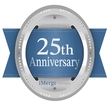What Are the Potential Risks and Mitigation Strategies Associated with Scaling Our Operations and Infrastructure?
Scaling a SaaS company is a high-stakes endeavor. While the upside includes increased market share, valuation multiples, and acquisition interest, the downside—if mismanaged—can erode customer trust, burn cash, and stall growth. As Jason Lemkin, founder of SaaStr, puts it: “You can’t scale broken processes. You’ll just break faster.”
For CEOs navigating this critical phase, understanding the risks and implementing proactive mitigation strategies is essential. Drawing on research from elite MBA programs (Harvard, Stanford, Wharton), insights from SaaS leaders, and data from sources like McKinsey and SaaS Capital, this article outlines the key operational and infrastructure risks—and how to address them with precision.
1. Innovation Risk: Losing Product-Market Fit at Scale
Risk:
As you scale, the pace of innovation often slows. Teams become siloed, customer feedback loops weaken, and the product roadmap may drift from core user needs. This can lead to feature bloat, declining NPS, and ultimately, churn.
Mitigation Strategies:
- Track Innovation KPIs: Use a dashboard inspired by Stanford’s innovation metrics—e.g., feature adoption rate, time-to-market, and % of revenue from new features.
- Customer-Centric Development: Implement continuous discovery frameworks (e.g., Teresa Torres’ Opportunity Solution Tree) to align product development with evolving customer needs.
- Cross-Functional Pods: Organize teams around customer segments or use cases to maintain agility and accountability.
As explored in What KPIs Should We Track to Gauge Innovation?, aligning innovation metrics with market responsiveness is key to sustaining competitive advantage.
2. Infrastructure Risk: Technical Debt and Downtime
Risk:
Rapid growth often exposes architectural weaknesses. Legacy code, monolithic systems, and under-provisioned cloud infrastructure can lead to outages, latency issues, and security vulnerabilities—damaging customer trust and increasing churn.
Mitigation Strategies:
- Adopt Scalable Architecture: Transition to microservices and containerization (e.g., Kubernetes) to improve modularity and fault tolerance.
- Implement SRE Practices: Use Site Reliability Engineering (SRE) principles to balance reliability and velocity. Track SLAs, SLOs, and error budgets.
- Invest in Observability: Deploy tools like Datadog or New Relic to monitor system health, latency, and anomalies in real time.
According to McKinsey’s 2023 tech trends report, companies that proactively modernize infrastructure see 30–50% fewer critical incidents during scale-up phases.
3. Financial Risk: Burn Rate and Forecasting Errors
Risk:
Scaling often requires upfront investment in talent, infrastructure, and customer acquisition. Without disciplined forecasting, companies risk overextending cash reserves or underestimating capital needs—jeopardizing runway and valuation.
Mitigation Strategies:
- Use Rolling Forecasts: Shift from static annual budgets to rolling 12-month forecasts, adjusting for real-time performance and market shifts.
- Track Unit Economics: Monitor LTV:CAC ratio, payback period, and gross margin by cohort. SaaS Capital’s 2023 survey found that companies with LTV:CAC > 3x were 2.5x more likely to attract growth-stage funding.
- Scenario Planning: Model best-case, base-case, and worst-case scenarios to guide hiring, marketing spend, and capital raises.
For more on financial modeling and valuation, see Valuation Multiples for Software Companies.
4. Customer Risk: Churn and Retention Blind Spots
Risk:
As your customer base grows, so does the complexity of managing retention. Without robust segmentation and lifecycle strategies, churn can quietly erode ARR—even as new logos are added.
Mitigation Strategies:
- Track CLTV and NRR: Monitor Customer Lifetime Value (CLTV) and Net Revenue Retention (NRR) by segment. High-growth SaaS firms often target NRR > 120%.
- Invest in Customer Success: Use health scores, QBRs, and usage analytics to proactively identify at-risk accounts.
- Leverage AI for Personalization: Tools like Gainsight PX or Pendo can tailor onboarding, in-app messaging, and support based on user behavior—boosting engagement and upsell potential.
Explore CLTV Metrics and Retention Strategies for deeper insights into maximizing customer value.
5. Talent Risk: Culture Dilution and Turnover
Risk:
Scaling often means doubling or tripling headcount in short order. Without intentional culture-building and leadership development, you risk misalignment, burnout, and attrition—especially among high performers.
Mitigation Strategies:
- Define and Operationalize Culture: Codify values, behaviors, and rituals. Use onboarding and performance reviews to reinforce them.
- Build Internal Talent Pipelines: Identify future leaders early and invest in coaching, stretch assignments, and succession planning.
- Monitor Engagement: Use pulse surveys and eNPS to track morale. Address hotspots before they become systemic.
As highlighted in Developing Internal Talent Pipelines, leadership continuity is a key driver of sustainable scale.
6. Regulatory and Compliance Risk
Risk:
Scaling into new markets or verticals introduces complex compliance requirements—GDPR, SOC 2, HIPAA, and more. Non-compliance can lead to fines, reputational damage, or blocked deals during M&A.
Mitigation Strategies:
- Build a Compliance Roadmap: Prioritize certifications based on customer and investor expectations. SOC 2 is often table stakes for enterprise SaaS.
- Appoint a Compliance Lead: Whether in-house or fractional, ensure someone owns data privacy, security, and regulatory tracking.
- Conduct Regular Audits: Use third-party assessments to identify gaps and prepare for due diligence.
For M&A readiness, see Due Diligence Checklist for Software (SaaS) Companies.
7. Acquisition Risk: Misaligned Targets or Integration Failures
Risk:
Acquiring to accelerate growth can backfire if cultural fit, tech stack compatibility, or customer overlap are misjudged. Poor integration can destroy value and distract leadership.
Mitigation Strategies:
- Use Wharton’s M&A Framework: Evaluate strategic fit, financial synergy, and integration complexity before issuing an LOI.
- Conduct Pre-LOI Diligence: As noted in Completing Due Diligence Before the LOI, early diligence reduces surprises and improves deal outcomes.
- Partner with M&A Advisors: Firms like iMerge use proprietary valuation models and integration playbooks to de-risk transactions and maximize post-deal value.
Conclusion: Scaling with Foresight
Scaling a SaaS business is not just about growing faster—it’s about growing smarter. From innovation metrics to infrastructure resilience, from financial forecasting to cultural integrity, each lever must be tuned with intention. The most successful SaaS CEOs treat risk not as a constraint, but as a compass—guiding strategic decisions that build enterprise value.
Scaling fast or planning an exit? iMerge’s SaaS expertise can guide your next move—reach out today.



